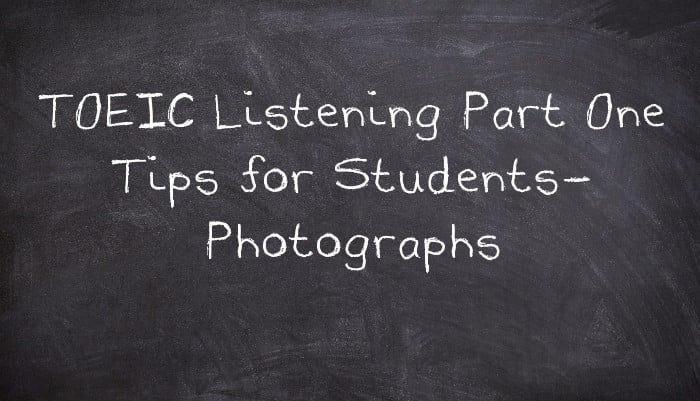Description of the task:
In this task type, you look at a photograph (usually showing someone in an office or travelling) and listen to four sentences. You have to choose the one sentence that describes the photograph accurately. All the other 3 sentences will not match the photo is some way, for example describing someone's feelings (something you can't see), using a slightly different word that is not the same as the thing in the photo, etc. The sentences are only spoken once.
How to prepare for this task
- You could try making sentences in your head in English describing what you are doing during your day ("I am getting on the bus", "I am washing my hair"), looking words up in your dictionary if you don't know the word for something or are not sure of its pronunciation.
- In the same way, it can help to make a list of all the things in your office or that you see on a plane etc. while you are travelling. To help you actually learn this vocabulary, you could try drawing the place and labelling the picture. Another method is to brainstorm useful vocabulary for each setting in categories and subcategories on a spider diagram. If you don't share your house or office with anyone, you could even put post it notes up around the place labelling everything you can see in English.
- Reading the captions describing pictures, e.g. in a newspaper, at an art exhibition, in a book of photographs can help prepare for this task, as could describing your own photos to your teacher and classmates, for example when you come back from holiday. You could also post your photos on a website like Flickr and write descriptions under each one in English.
- Some videos especially designed for language learners have activities where you need to describe what is going on on the screen or match the description to the scene, which could be good practice for this task
- There can sometimes be trick questions based on pronunciation in this task, so working on your pronunciation of vowel sounds in English and learning words that have the same pronunciation but different meanings can help.
How to do this task
- Before the recording starts, look at the photo and make as many sentences in your head in English about what is happening in the photo as you can, e.g. "The man is getting on a bus", "He is smiling", "He is carrying a case"
- When the recording starts, decide if each of the four sentences you hear is definitely false, maybe true or definitely true. You might find making a cross, question mark and tick on the page with your finger helps you remember each one. Reasons it might be false include- the action is the same as in the picture but the person or object is different, the thing described in the sentence is not the kind of thing you can see, the word in the sentence is something that sounds like the thing in the picture but is actually a different word etc.
- Even if you are sure that A or B is the correct answer, listen carefully to the other questions to make sure they are not true to double check your answer.
- If you are not sure about the answer and still have 2 or 3 options you think it could be after listening to all four sentences, thinking about it any longer is not likely to help and will stop you concentrating on the next question. Just decide quickly, write down your answer and move onto the next question. If you like you can lightly write a question mark next to your answer on the answer sheet to remind you to come back and think about the question later if you have time at the end of the test, but make sure you erase the question mark(s) before you hand in your answer sheet.
- As soon as you have written down your answer, move onto the next task and start thinking about the picture for that one.
